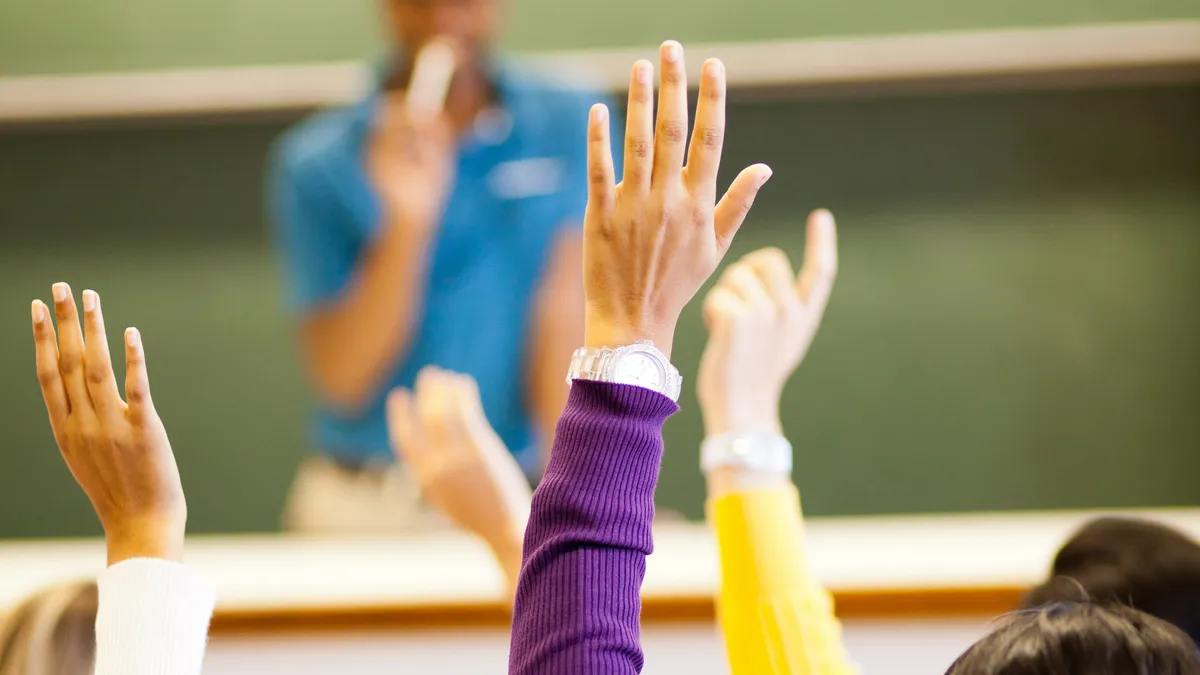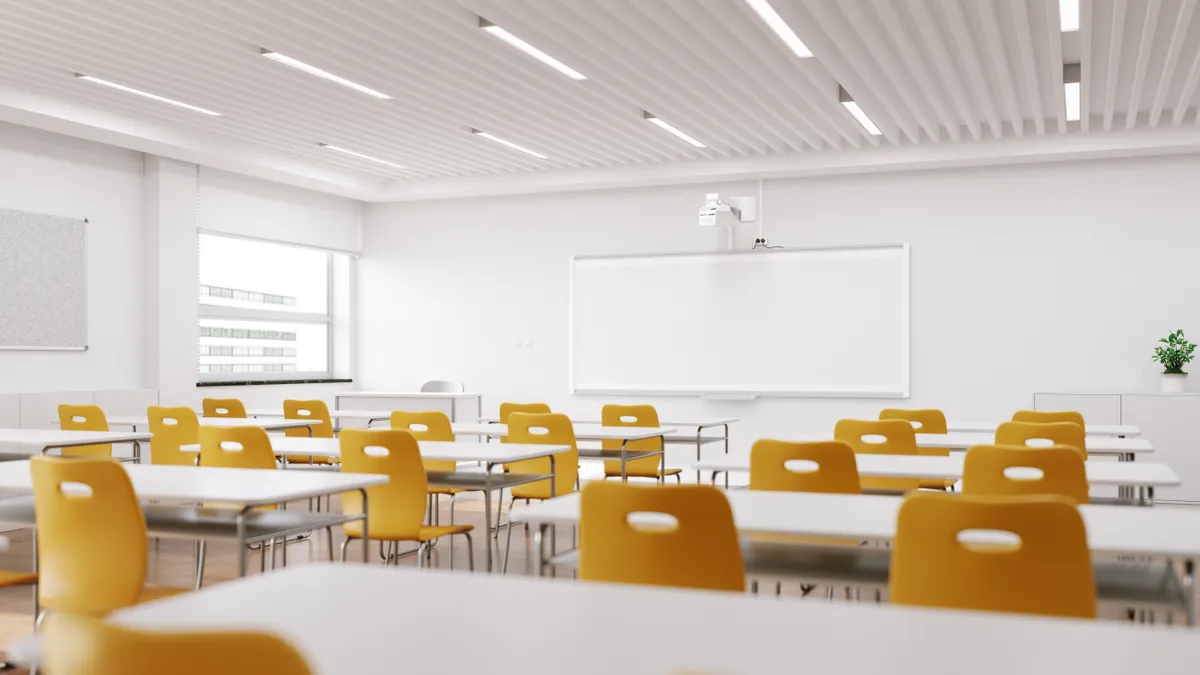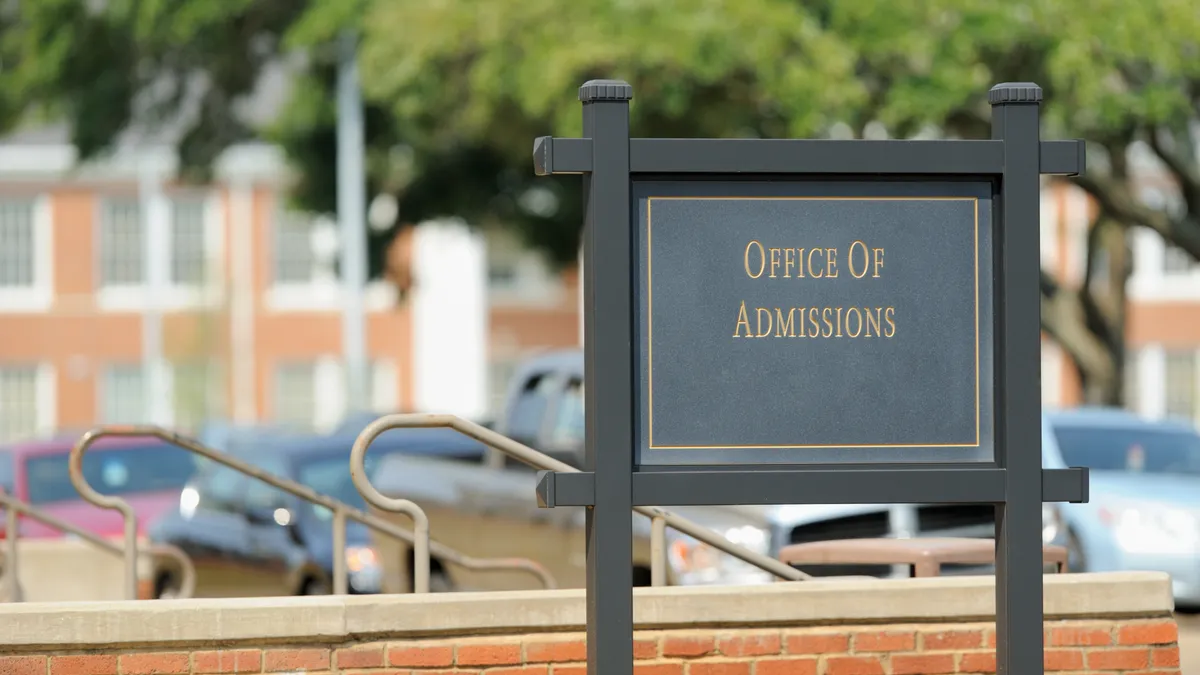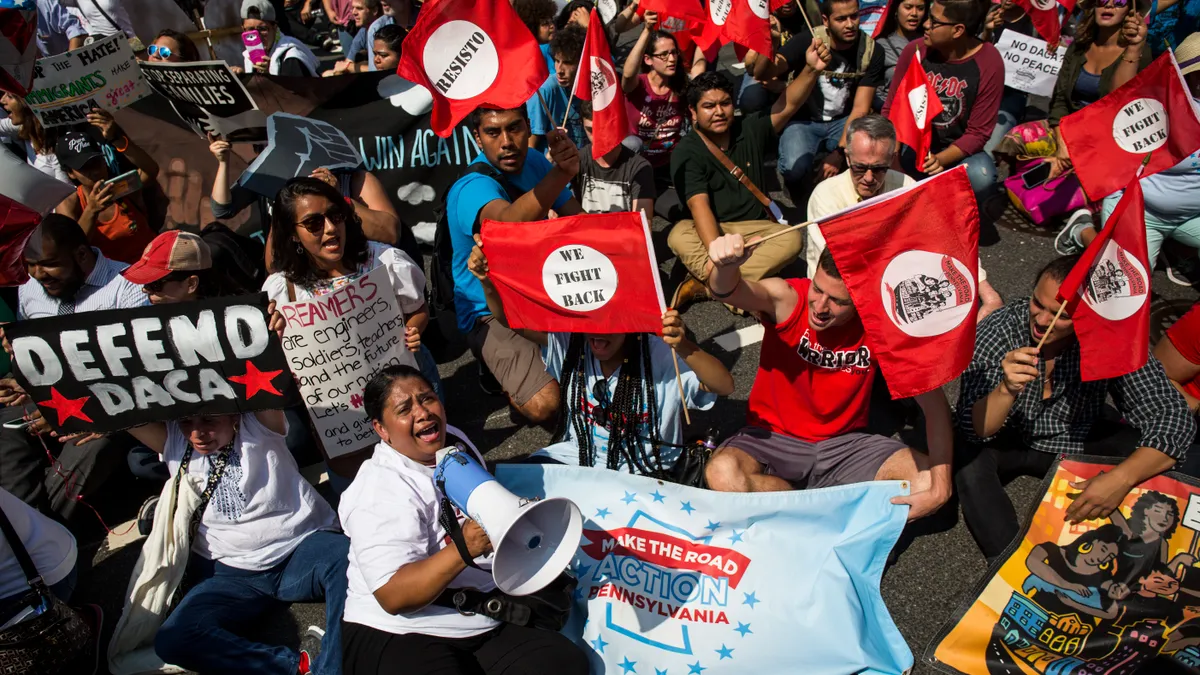For additional coverage of another recent study comparing parent participation and satisfaction levels in charters and traditional public schools, click here.
Americans express increasing support for school choice models often backed by Republicans, including vouchers to send low-income students to private schools and tax credits for donations to organizations that give private school scholarships, according to this year’s Education Next poll.
But the findings also show that, compared to past years, more Americans are siding with teachers who go on strike, and they have favorable views of teachers unions — opinions more common among Democrats.
“It’s not like the country is moving in a left direction or a right direction,” said Paul Peterson, the senior editor of the Education Next journal, which tends to feature more conservative viewpoints. He’s also the director of the Program on Education Policy and Governance at Harvard University.
Peterson added that the rising support for policies that are “quite different from one another” could suggest Americans want to see change.
Conducted since 2007, the poll includes the responses of 3,046 Americans, including over-samples of teachers, African Americans and Hispanics. For the first time, high school students were also surveyed, and their responses on issues covered in the poll — including school safety, free college tuition and teacher pay — were compared to those of their parents.
While some of the topics overlap with those covered in the annual Phi Delta Kappa (PDK) poll, released earlier this month, the Education Next poll also includes topics not addressed in the PDK questions this year, such as the Common Core and higher education.
Confusion over charter schools
With school choice surfacing as an issue among Democratic presidential candidates, the poll report shows views on giving families more educational options are changing.
U.S. Secretary of Education Betsy DeVos, who has been promoting the Trump administration’s federal tax credit plan, is likely to see the results as good news. Of the poll’s respondents, 58% said they are in favor of tax credits, up from 53% in 2016. Support was highest among Republicans at 65%.
Currently, 18 states have a similar policy, according to the poll report. But Martin West, editor-in-chief of Education Next and an education professor at Harvard, noted the Trump administration's plan, called Education Freedom Scholarships, is “not going anywhere right now in the Congress.”
The bill, introduced by Republican Sen. Ted Cruz of Texas, was read twice and referred to the Senate Finance Committee in February, but there has been no action since.
Support for targeted vouchers has increased since 2016 among people in both parties, with 44% of Republicans and 52% of Democrats this year expressing support for allowing low-income students the option to attend a private school. More than half of the respondents — 55% — favor allowing all students the option to attend a private school at the public’s expense, regardless of their family’s income, while 37% oppose the idea and the rest remain neutral.
While no state currently has such a universal plan, support for the idea has been gaining since 2017.
Among Democrats, African Americans and Hispanics are driving the increase in support for the three primary school choice policies — vouchers, tax credits and charter schools. White Democrats were the least likely to support any of those ideas.
The findings also drive home the increasing polarization over charter schools — a model that once drew strong bipartisan support but that now many Democratic presidential hopefuls say is hurting traditional public schools. Overall, 48% of respondents are in favor of charters, but support ranges from a high of 61% of Republicans to a low of 40% of Democrats.
Steve Zimmerman, director of the Coalition of Public Independent Charter Schools, which formed in 2018 for those charters that wanted to separate themselves from large networks, said “there is a huge split and it’s blistering within the Democrats themselves.”
Sen. Bernie Sanders of Vermont, for example, has called for a moratorium on new charter schools, while Sen. Cory Booker of New Jersey has taken a more balanced view, noting charter schools have increased opportunities for low-income black students to attend higher-performing schools.
“The real question,” Zimmerman said, is whether “Democrats are going to fracture over this to the point where it becomes a wedge issue.”
While charter schools exist in 44 states and have been part of the makeup of public education since the early 1990s, there is also still confusion over what they can and can’t do, the results show. Eighteen percent of respondents wrongly answered that charter schools can hold religious services, and more than a quarter, 29%, incorrectly responded that charter schools can charge tuition.
On both questions, respondents were more likely to say they didn’t know the answer than to give one.
West said that even though more have been “exposed to the debate” over charters, the public’s understanding of the concept has not improved over time. “It seems to be leading more of them to form an opinion, but that doesn’t necessarily mean they’ve become more knowledgeable,” he said.
Peterson added that respondents in communities where charters exist are more likely to support them, which seems to run counter to the impression left by recent strikes in the Los Angeles and Oakland districts in California, where unions express opposition to the growth of charters.
West and Peterson note that their national data won’t always reflect public opinion in specific cities.
“That said, it is hardly unusual in American politics for there to be differences in the views of ordinary citizens and the positions taken by organized groups that have the resources to mobilize,” they said in a joint email, adding that they don't see anti-charter sentiment among the unions as a contradiction to the finding that support is higher in communities with charter schools.
Common Core regaining support
Even though Florida and Alabama have taken steps recently to remove the Common Core State Standards, support among Americans has rebounded to 50%, up from 41% in 2017.
This was one of the areas where questions were phrased in different ways for a randomly selected segment of the respondents to determine whether using the specific term Common Core triggered a negative response. When they were asked if they support “standards for reading and math that are the same across the states,” 66% of those respondents said yes, and the gap between Democrats and Republicans almost disappeared.
“Perhaps the supporters of common standards could harness this strong majority support by launching public-awareness campaigns and re-branding efforts,” the poll report says.
That’s exactly what has happened in a large number of states, where curriculum experts, teachers, parents and other contributors have revised the standards to address concerns and often given them a state-specific name.
As with the PDK Poll results, there was support for increased spending — both for teacher pay as well as for education in general. In both cases, respondents were more likely to favor increases if they didn’t know how much was currently being spent.
Respondents were also more supportive of increasing the federal government’s share of spending on schools.
“It appears that the Democratic presidential candidates that are out calling for increases in federal spending seem to know what they’re doing,” West said.
During a candidate forum at this year’s National Education Association convention in Houston, several candidates pledged to increase federal funding for schools, with Sanders and former Vice President Joe Biden of Pennsylvania both saying they would triple Title I funding for low-income schools.
Grading the schools and higher ed
Like the PDK Poll, Education Next asks respondents how they would grade public schools — from those in their own communities to schools in general. As with the PDK Poll results, Americans are far more positive about their local schools than the nation’s schools in general, with 60% of respondents on the Education Next poll giving their local public schools an A or B — the highest since the poll began.
Only about a quarter give the nation’s schools high grades.
While the increasing support for school choice might appear to be a contradiction to the finding that people are pleased with their local schools, Peterson suggested Americans’ low opinions of schools overall might indicate they think “elsewhere, people need to have a choice.”
Respondents were also polled on their opinions of the nation’s postsecondary schools — a new category this year. More than half, 58%, give the nation’s public four-year universities an A or B, and 66% assign these grades to private institutions. Those percentages are even higher when Americans are asked about the four-year institutions in their own states.
There are also partisan splits over the topics of free college and undocumented immigrants’ access to higher education. Eighty-five percent of Democrats favor making two-year public colleges free to attend and 79% are in favor of extending the policy to four-year public institutions.
But among Republicans, only 47% are in favor of free tuition at two-year schools, and that drops to 35% on the question about four-year institutions. In addition, more than 70% of Republican respondents are opposed to allowing undocumented immigrants to attend college at the in-state tuition rate, compared to a quarter of Democrats.
Students less positive about local schools
When high school students’ responses are compared to those of their parents, the results on most topics, such as increasing teachers’ salaries and universal vouchers, show little variation. But students were less likely than adults to rate their local schools high and more likely to grade the nation’s schools with an A or a B — a departure from the way adults typically respond to such questions.
Sachi Takahashi-Rial, the director of partnerships for YouthTruth Student Survey, used by school districts across the country, noted that the sample of students for the Education Next poll — 415 — is very small, and that in many of the high schools using YouthTruth surveys, sample sizes are four times that number.
Still, she added that it’s not unusual to see patterns in which adults are more positive about local schools than their children — on school climate and social-emotional issues, for example.
“Our analyses often reveal that students rate their school experience less positively than the staff and families interacting with the same school,” she said. “This trend underscores how absolutely critical it is that we listen to young people. If adults … feel satisfied with their experiences in schools, but we aren’t meeting the needs of students, we still have more work to do.”




















